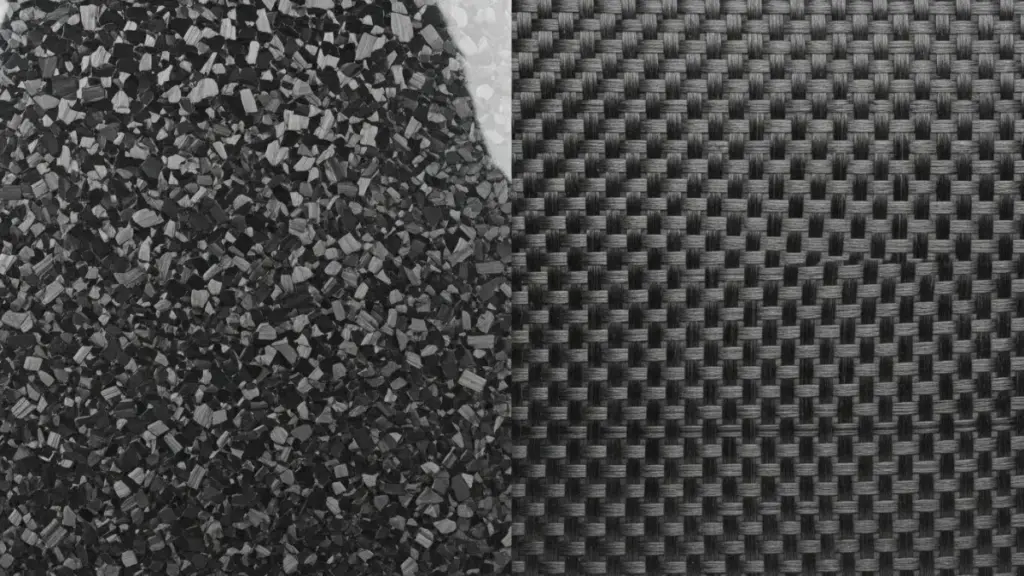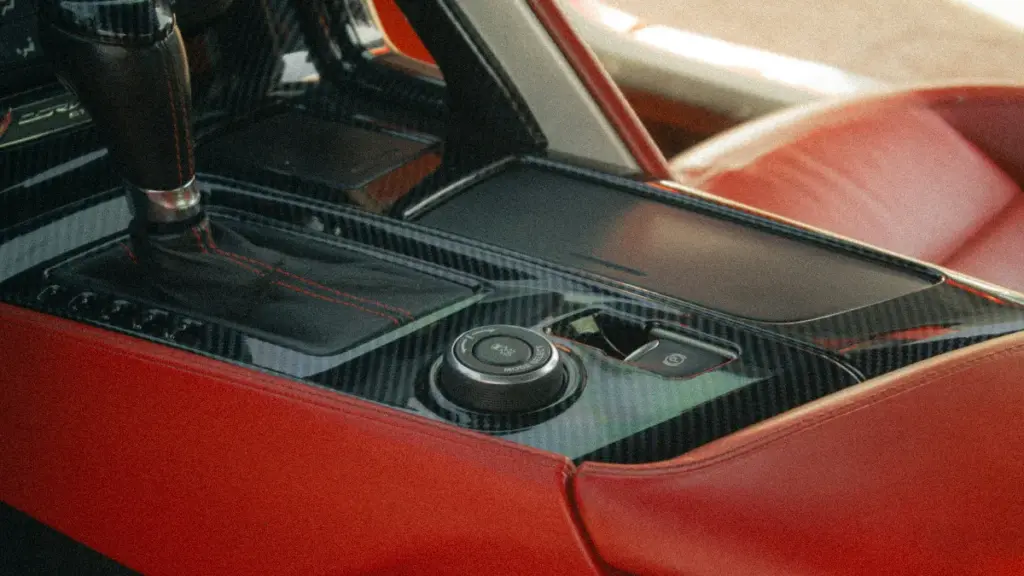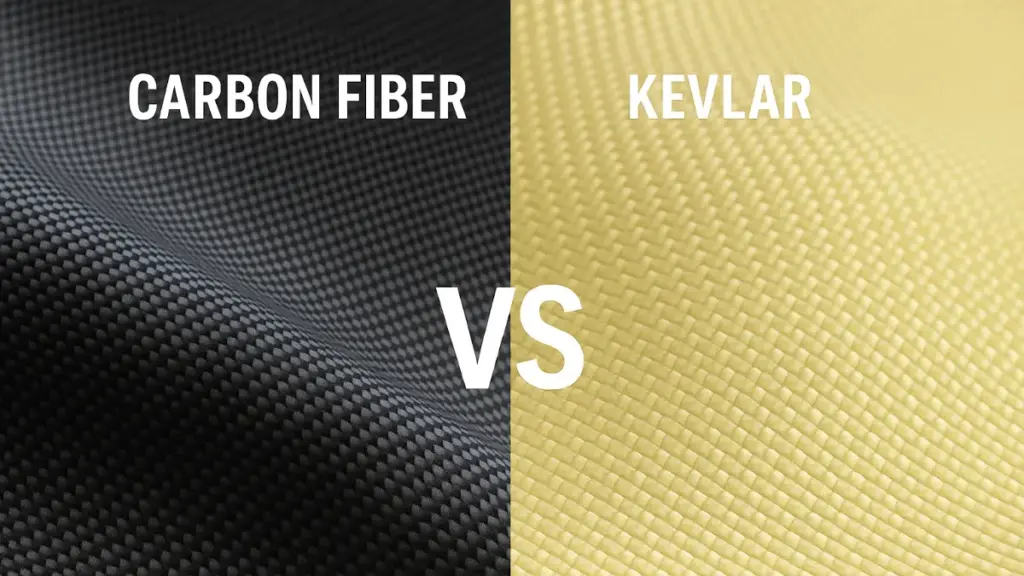
Die Automobilindustrie setzt zunehmend auf Kohlefaser als bahnbrechendes Material. Mit seiner außergewöhnliches Verhältnis von Festigkeit zu GewichtCarbonfaser bietet enormes Potenzial, die Zukunft des Automobilbaus zu verändern. Dieses leichte Hochleistungsmaterial hat das Potenzial, die Art und Weise, wie Fahrzeuge konstruiert, gebaut und gefahren werden, zu revolutionieren.
In diesem Artikel untersuchen wir die Bedeutung von Carbonfaser-Autoteilen in der Automobilindustrie und gehen auf deren potenziellen Einfluss auf zukünftige Entwicklungen im Automobilbereich ein. Entdecken Sie, wie Carbonfaser Innovationen vorantreibt und unsere Fahrzeuge neu definiert.
Aktuelle Verwendung von Kohlefasern in der Automobilindustrie
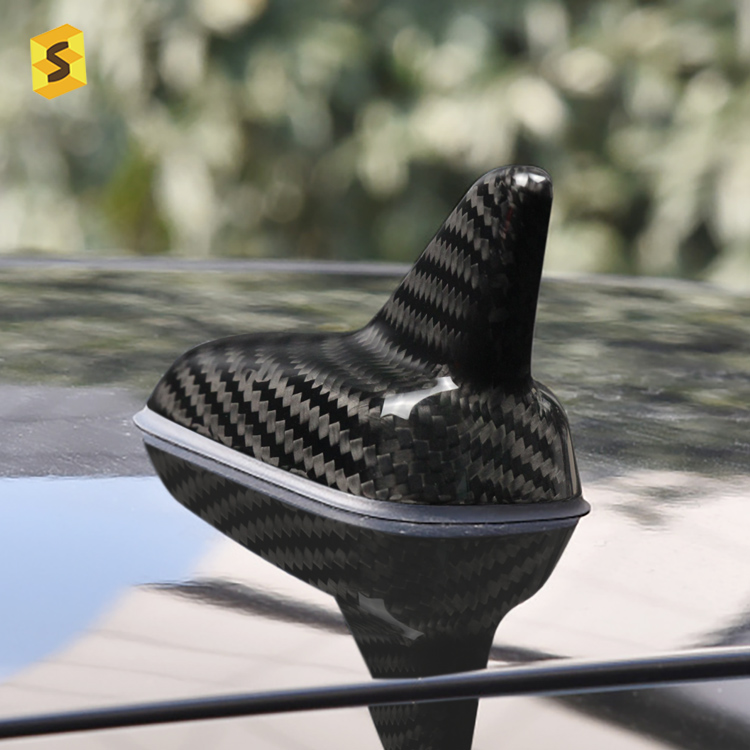
Carbonfasern haben in der Automobilindustrie bereits große Verbreitung gefunden. Herstellung, dessen Anwendungen sich über verschiedene Komponenten und Systeme erstrecken. Werfen wir einen genaueren Blick auf die aktuelle Verwendung von Kohlefasern und die Vorteile, die sie der Automobilindustrie bieten.
Karosserieteile und -strukturen
Kohlefaser wird häufig zur Herstellung von Karosserieteilen wie Motorhauben, Dächern, Türen und Kotflügeln verwendet. Ihr hohes Festigkeits-Gewichts-Verhältnis ermöglicht leichte und dennoch robuste Karosseriestrukturen, die Kraftstoffeffizienz, Agilität und Leistung verbessern. Außenteile aus Kohlefaser tragen außerdem zur Geräuschreduzierung und besseren Handhabung durch optimierte Gewichtsverteilung bei.
Fahrwerks- und Aufhängungskomponenten
Kohlefaser wird zur Herstellung von Fahrwerkselementen wie Hilfsrahmen, Querlenkern und Aufhängungsgliedern verwendet. Durch den Einsatz von Kohlefaser können Automobilhersteller die ungefederte Masse reduzieren und so Ansprechverhalten, Stabilität und Fahrkomfort verbessern. Die Steifigkeit des Materials ermöglicht ein besseres Handling und sorgt für eine präzise und vorhersehbare Fahrzeugdynamik.
Innenausstattung und Verkleidungskomponenten
Innenteile aus Kohlefaser verleiht dem Fahrzeuginnenraum einen Hauch von Eleganz und Sportlichkeit und wird oft verwendet für Innenverkleidungen, Mittelkonsolen und Armaturenbrett-Akzente. Neben der Ästhetik trägt Carbonfaser zur Gewichtsreduzierung bei, ohne Kompromisse bei Qualität und Sicherheitsstandards einzugehen. Leichtere Innenraumelemente tragen zu einer besseren Fahrzeugbalance und einem geringeren Energieverbrauch bei.
Leistungsverbesserungen
Carbonfaser wird in Hochleistungssportwagen und Supersportwagen häufig eingesetzt, um Geschwindigkeit und Agilität zu maximieren. Durch die Integration von Carbonfaserkomponenten erreichen Fahrzeuge ein höheres Leistungsgewicht, was zu atemberaubender Beschleunigung und außergewöhnlichem Handling führt. Leistungsorientierte Teile wie Spoiler, Diffusoren und aerodynamische Elemente profitieren von der Festigkeit und dem geringen Gewicht von Carbonfaser.
Die Vorteile der Verwendung von Autoteilen aus Kohlefaser gehen über die Leistungssteigerung hinaus:
- Gewichtsreduzierung und Kraftstoffeffizienz
Das geringe Gewicht von Carbonfasern reduziert das Fahrzeuggewicht, was zu einer verbesserten Kraftstoffeffizienz und geringeren Emissionen führt. Leichtere Autos benötigen weniger Energie zum Antrieb und tragen so zu einem umweltfreundlicheren Transport bei.
- Stärke und Haltbarkeit
Kohlefaser weist eine bemerkenswerte Festigkeit auf und ist daher äußerst widerstandsfähig gegen Stöße, Vibrationen und Korrosion. Autoteile aus Kohlefaser halten rauen Umgebungen stand und gewährleisten Langlebigkeit und Zuverlässigkeit.
- Erweiterte Designmöglichkeiten
Die Flexibilität und Formbarkeit von Carbonfasern ermöglichen komplexe und einzigartige Designs, die es Automobilherstellern ermöglichen, optisch beeindruckende Fahrzeuge zu entwickeln. Der Einsatz von Carbonfasern eröffnet Möglichkeiten für eine individuelle Ästhetik und ermöglicht es Autoliebhabern, ihre Fahrzeuge zu personalisieren.
Da sich die Carbonfaser ständig weiterentwickelt, deutet ihre zunehmende Verwendung in der Automobilindustrie auf eine transformative Zukunft hin, in der leichte, nachhaltige und leistungsstarke Fahrzeuge zur Norm werden.
Fortschritte in der Kohlefasertechnologie
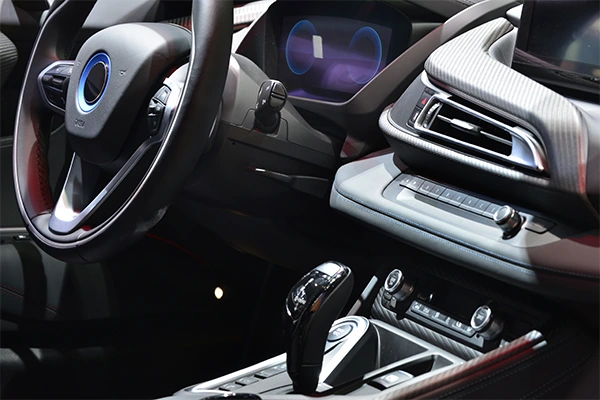
Die Kohlefasertechnologie hat sowohl bei den Fertigungstechniken als auch bei den Materialeigenschaften bedeutende Fortschritte erzielt. Diese Fortschritte fördern den Einsatz von Kohlefaser im Automobilbau und ebnen den Weg für zukünftige Innovationen. Werfen wir einen Blick auf die neuesten Entwicklungen in der Kohlefasertechnologie.
Verbesserte Fertigungstechniken
Neue Fertigungsverfahren revolutionieren die Produktion von Carbonfasern und führen zu höherer Effizienz und geringeren Kosten. Einige wichtige Techniken sind:
- Automatisierte Faserplatzierung (AFP)
AFP nutzt Robotersysteme zum präzisen Verlegen von Carbonfasersträngen. Dadurch können komplexe Formen und Strukturen mit hoher Genauigkeit hergestellt werden. Dieser automatisierte Prozess optimiert den Materialverbrauch, reduziert Abfall und beschleunigt die Produktion.
- Harztransferformen (RTM)
Beim RTM-Verfahren wird Harz in vorgeformte Kohlefasermatten injiziert, wodurch präzise und konsistente Verbundteile entstehen. Dieses Verfahren bietet eine verbesserte Kontrolle der Harzinfusion und führt zu hochwertigen Komponenten mit reduzierten Hohlräumen und verbesserter Festigkeit.
- Kontinuierliche Faserherstellung (CFM)
CFM bezeichnet die kontinuierliche Produktion von Carbonfaserplatten oder -bändern, wodurch Zwischenschritte wie das Weben entfallen. Diese Methode ermöglicht schnellere Produktionsraten, weniger Abfall und eine höhere Skalierbarkeit.
Verbesserte Materialeigenschaften
Forscher und Hersteller erweitern kontinuierlich die Möglichkeiten von Kohlefaserverbundwerkstoffen und konzentrieren sich auf die Verbesserung ihrer Materialeigenschaften. In folgenden Bereichen wurden bereits bedeutende Fortschritte erzielt:
- Höheres Verhältnis von Festigkeit zu Gewicht
Ingenieure entwickeln Kohlefaserverbundwerkstoffe mit einem noch höheren Verhältnis von Festigkeit zu Gewicht, das die Leistungsfähigkeit herkömmlicher Materialien wie Stahl und Aluminium übertrifft. Diese fortschrittlichen Verbundwerkstoffe bieten außergewöhnliche Festigkeit bei gleichzeitig geringem Gewicht und ermöglichen so weitere Gewichtsreduzierungen bei Fahrzeugen.
- Verbesserte Schlagfestigkeit
Kohlefaserverbundwerkstoffe werden zunehmend stoßfester und eignen sich daher ideal für sicherheitskritische Automobilkomponenten. Dank fortschrittlicher Fertigungstechniken und Materialzusammensetzungen können Kohlefasern Aufprallkräfte besser absorbieren und verteilen und so die Fahrzeugsicherheit erhöhen.
- Verbesserte Flexibilität und Haltbarkeit
Innovationen in der Kohlefasertechnologie haben zur Entwicklung von Verbundwerkstoffen mit verbesserter Flexibilität und Haltbarkeit geführt. Diese Flexibilität ermöglicht eine einfachere Integration in komplexe Formen und gekrümmte Oberflächen und erweitert so die Gestaltungsmöglichkeiten. Die verbesserte Haltbarkeit gewährleistet die Langlebigkeit von Kohlefaserkomponenten und macht sie für den langfristigen Einsatz in anspruchsvollen Automobilanwendungen geeignet.
Diese Fortschritte bei Fertigungstechniken und Materialeigenschaften fördern die breite Anwendung von Carbonfasern in der Automobilindustrie. Mit der Weiterentwicklung von Carbonfasern sind weitere spannende Entwicklungen zu erwarten, die die Zukunft leichter, leistungsstarker und nachhaltiger Fahrzeuge vorantreiben.
Zukünftige Anwendungen von Kohlefasern im Automobil
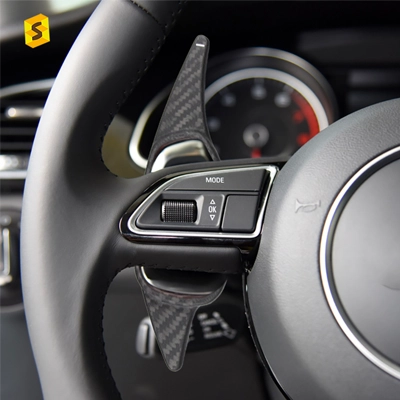
Carbonfasern werden die Zukunft des Automobils entscheidend mitgestalten. Mit den fortschreitenden Fortschritten in der Carbonfasertechnologie dürften ihre Einsatzmöglichkeiten zunehmen und die Automobilindustrie in vielerlei Hinsicht revolutionieren.
Leichtbau für mehr Effizienz
Einer der Hauptvorteile von Carbonfasern ist die Möglichkeit, das Fahrzeuggewicht deutlich zu reduzieren, was zu einem geringeren Kraftstoffverbrauch und einer besseren Leistung führt. In zukünftigen Anwendungen kann Carbonfaser:
- Reduzieren Sie das Gewicht herkömmlicher Verbrennungsmotoren weiter, steigern Sie so die Gesamteffizienz und verringern Sie den Kohlendioxidausstoß.
- Bietet erhebliches Potenzial für Elektro- und Hybridfahrzeuge und ermöglicht durch den Ausgleich des Gewichts schwerer Batterien eine größere Reichweite.
- Führt zu schnellerer Beschleunigung und verbesserter Handhabung aufgrund der reduzierten Masse.
Sicherheitsinnovationen
Die außergewöhnliche Festigkeit und Schlagfestigkeit von Kohlefasern machen sie zu einem idealen Material zur Verbesserung der Fahrzeugsicherheit. Zukünftige Anwendungen könnten sein:
- Verbesserte Crashsicherheit durch den Einsatz von Kohlefaserkomponenten in kritischen Bereichen wie der Fahrgastzelle und Knautschzonen.
- Verbesserter Insassenschutz, da Carbonfasern Aufprallkräfte absorbieren und umverteilen und so das Verletzungsrisiko verringern.
- Fortschritte bei der Kohlenstofffaserverstärkung können die strukturelle Integrität stärken und so ein robustes Sicherheitsgerüst für Fahrzeuge schaffen.
Gestaltungsfreiheit und individuelle Anpassung
Carbonfaser bietet beispiellose Gestaltungsfreiheit und ermöglicht einzigartige Fahrzeugdesigns und eine individuelle Ästhetik. Zukünftige Anwendungen könnten sein:
- Die Integration von Kohlefaser in Karosserieteile ermöglicht innovative Formen, Kurven und Konturen, die zuvor nur schwer zu erreichen waren.
- Möglichkeiten für personalisierte Komponenten, die es Autoliebhabern ermöglichen, ihre Fahrzeuge mit Akzenten, Verzierungen und Details aus Kohlefaser individuell zu gestalten.
- Die natürliche Schönheit von Kohlefasern kann die optische Attraktivität von Fahrzeugen insgesamt steigern und ihnen einen Hauch von Eleganz und Sportlichkeit verleihen.
Die zukünftigen Anwendungen von Carbonfasern im Automobilbereich bergen enormes Potenzial, die Branche zu verändern. Von Leichtbau für mehr Effizienz bis hin zu Sicherheitsinnovationen und Designfreiheit – Carbonfasern werden die Entwicklung von Fahrzeugen vorantreiben, die nicht nur kraftstoffsparender und sicherer, sondern auch optisch ansprechender und individuell anpassbar sind. Mit fortschreitender Forschung und Entwicklung sind spannende Durchbrüche zu erwarten, die die Position von Carbonfasern als unverzichtbares Material im Automobilbereich festigen.
Herausforderungen und Einschränkungen

Quelle: Pinterest
Der breite Einsatz von Carbonfasern in verschiedenen Branchen, einschließlich der Automobilindustrie, ist mit verschiedenen Herausforderungen und Einschränkungen verbunden, die es zu bewältigen gilt. Dazu gehören:
Kosten
Kohlefaser ist im Vergleich zu herkömmlichen Materialien wie Stahl oder Aluminium noch relativ teuer. Die hohen Kosten für Rohstoffe, Herstellung und Verarbeitung tragen zu den Gesamtkosten bei. Fortschritte in der Fertigungstechnik, Skaleneffekte und zunehmender Wettbewerb senken die Kosten jedoch schrittweise.
Produktionskapazität
Die Produktionskapazität für Carbonfasern ist derzeit begrenzt. Um die Produktion entsprechend der steigenden Nachfrage zu steigern, sind erhebliche Investitionen in Produktionsanlagen und -ausrüstung erforderlich. Eine Erhöhung der Produktionskapazität ist unerlässlich, um Carbonfasern zugänglicher und kostengünstiger zu machen.
Recycling
Kohlefaser stellt beim Recycling eine Herausforderung dar. Die komplexe Verbundstruktur und die Notwendigkeit, Kohlefaser vom Harz zu trennen, machen das Recycling zu einem technisch anspruchsvollen und kostspieligen Prozess. Um die Nachhaltigkeit von Kohlefaserkomponenten über den gesamten Lebenszyklus zu verbessern, sind verbesserte Recyclingmethoden und die Entwicklung nachhaltigerer End-of-Life-Lösungen notwendig.
Regulatorische Überlegungen
Der Einsatz von Kohlefaser im Automobilbau ist auch mit regulatorischen Aspekten verbunden. Vorschriften zu Sicherheit, Crashsicherheit, Emissionen und Brandschutz können zusätzliche Validierungen und Tests für Kohlefaserkomponenten erfordern. Die Einhaltung dieser Vorschriften ist für eine breite Akzeptanz entscheidend.
Die Bewältigung dieser Herausforderungen und Einschränkungen erfordert die Zusammenarbeit von Industrie, Forschungseinrichtungen und Aufsichtsbehörden. Investitionen in Forschung und Entwicklung zur Verbesserung von Herstellungsprozessen, die Erforschung alternativer und nachhaltiger Rohstoffe sowie die Entwicklung effizienter Recyclingmethoden sind wichtige Schwerpunkte. Darüber hinaus ist der Dialog mit den Aufsichtsbehörden zur Festlegung geeigneter Standards und Richtlinien für den Einsatz von Carbonfasern unerlässlich.
Die Bewältigung dieser Herausforderungen wird zu einer breiteren Akzeptanz von Carbonfasern in der Automobilindustrie beitragen und deren Integration in die Serienproduktion erleichtern. Mit dem fortschreitenden technologischen Fortschritt wird erwartet, dass sich die Kosteneffizienz, die Produktionskapazität, die Recyclingfähigkeit und die Einhaltung gesetzlicher Vorschriften verbessern werden, was eine breitere Verbreitung und die Ausschöpfung ihres vollen Potenzials ermöglicht.
Kooperationen und Partnerschaften

Kooperationen zwischen Automobilherstellern, Zulieferern und Hersteller von Autoteilen aus Kohlefaser haben maßgeblich zur Einführung und Weiterentwicklung von Carbonfasern in der Automobilindustrie beigetragen. Diese Partnerschaften bündeln Fachwissen aus verschiedenen Branchen, um Herausforderungen zu meistern und die Integration von Carbonfasern in Fahrzeuge zu beschleunigen.
Zusammenarbeit zwischen Automobilherstellern und Kohlefaserherstellern
- BMW und SGL Group
BMW gründete gemeinsam mit der SGL Group das Joint Venture SGL Automotive Carbon Fibers. Ziel dieser Partnerschaft war die Entwicklung von Kohlefaserherstellungsverfahren und die Lieferung von Kohlefasermaterialien für BMW-Fahrzeuge, darunter die Elektromodelle i3 und i8.
- Ford und die Kohlenstoffrevolution
Ford kooperiert mit Carbon Revolution, um gemeinsam fortschrittliche Carbonfaserräder für den Ford GT Supersportwagen zu entwickeln und einzusetzen. Der Fokus dieser Zusammenarbeit liegt auf der Leistungssteigerung, Gewichtsreduzierung und Verbesserung der Kraftstoffeffizienz durch den Einsatz von Carbonfaserverbundwerkstoffen.
Zusammenarbeit zwischen Automobilherstellern und Zulieferern
- General Motors und Teijin
General Motors arbeitete mit Teijin, einem führenden Kohlefaserhersteller, zusammen, um die Entwicklung und den Einsatz von kohlenstofffaserverstärkten thermoplastischen Materialien (CFRTP) in zukünftigen Fahrzeugen zu erforschen. Ziel dieser Zusammenarbeit war es, das Fahrzeuggewicht zu reduzieren und die Kraftstoffeffizienz zu verbessern.
- Audi und Toray
Audi kooperiert mit Toray Industries, einem globalen Anbieter von Kohlefasern, um den Einsatz von Kohlefaserverbundwerkstoffen im Fahrzeugbau zu verbessern. Ziel der Zusammenarbeit ist die Verbesserung von Energieeffizienz, Leistung und Nachhaltigkeit durch den Einsatz leichter Kohlefasermaterialien.
Die Bedeutung von Partnerschaften
Partnerschaften zwischen Automobilherstellern, Zulieferern und Kohlefaserherstellern sind aus mehreren Gründen unerlässlich:
- Austausch von technischem Fachwissen
Kooperationen ermöglichen den Austausch von technischem Wissen und Expertise. Automobilhersteller profitieren vom Know-how der Kohlefaserhersteller in Materialentwicklung, Fertigungsprozessen und Qualitätskontrolle, während Zulieferer Einblicke in die Anforderungen an das Automobildesign und die Produktionslogistik erhalten.
- Ressourcenteilung und Kostensenkung
Partnerschaften ermöglichen die gemeinsame Nutzung von Ressourcen, darunter Forschungs- und Entwicklungseinrichtungen, Ausrüstung und geistiges Eigentum. Durch die Bündelung von Ressourcen können die Beteiligten gemeinsam in die Technologieentwicklung investieren, wodurch Kosten gesenkt und Innovationen beschleunigt werden.
- Lieferkettenintegration
Kooperationen ermöglichen eine nahtlose Integration der Carbonfaser-Lieferkette in den Automobilherstellungsprozess. Effektive Partnerschaften gewährleisten eine zuverlässige Versorgung mit hochwertigen Carbonfasermaterialien und vermeiden so potenzielle Engpässe und Verzögerungen.
- Herausforderungen meistern und Risiken mindern
Die Einführung von Carbonfasern in der Automobilindustrie ist mit Herausforderungen wie hohen Kosten, Skalierbarkeit der Fertigung und Reparaturfähigkeit verbunden. Kooperationen helfen, diese Herausforderungen zu bewältigen, indem sie Ressourcen, Technologien und Fachwissen bündeln und so Lösungen entwickeln, die die Einführungshindernisse überwinden.
- Beschleunigung der Einführung
Partnerschaften erleichtern die Entwicklung standardisierter Fertigungsprozesse, Zertifizierungsstandards und Designrichtlinien für Carbonfaseranwendungen. Dies vereinfacht den Einführungsprozess und ermöglicht eine schnellere Integration von Carbonfasern in die Serienproduktion von Fahrzeugen.
Zusammenfassend lässt sich sagen, dass Kooperationen und Partnerschaften zwischen Automobilherstellern, Zulieferern und Kohlefaserherstellern der Schlüssel zur Bewältigung von Herausforderungen, zur Förderung von Innovationen und zur Beschleunigung der Einführung von Kohlefaser in der Automobilindustrie sind. Durch die Zusammenarbeit treiben diese Akteure Fortschritte in Technologie, Materialeigenschaften und Herstellungsprozessen voran und läuten so eine neue Ära leichter, effizienter und sicherer Fahrzeuge ein.
Abschluss
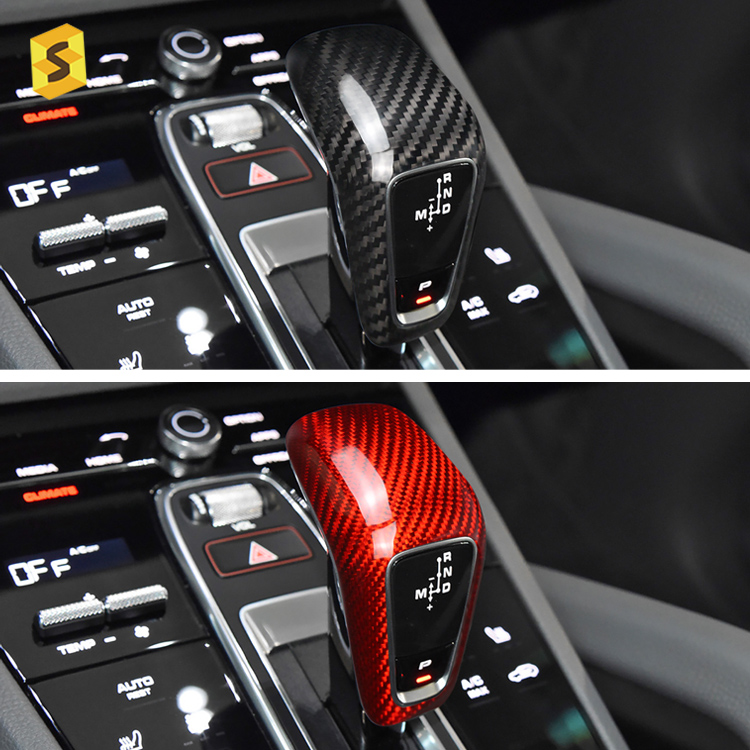
Zusammenfassend lässt sich sagen, dass Carbonfasern die Automobilindustrie revolutionieren. Ihr geringes Gewicht, ihre Sicherheitsvorteile und ihre Designflexibilität machen sie zu einem wertvollen Werkstoff. Kontinuierliche Forschung, Entwicklung und Zusammenarbeit sind entscheidend, um ihr Potenzial voll auszuschöpfen. Durch den Einsatz von Carbonfasern können wir leichtere, sicherere und optisch ansprechende Fahrzeuge bauen und die Branche in Richtung Nachhaltigkeit und Höchstleistungsstandards vorantreiben.


